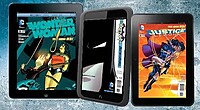
It took long enough, but several sources have finally declared 2012 to have been the year of the Indie Author. From their declarations, what set 2012 apart seems to have been the reduced stigma in being a self-published author, the volume of high-quality works that are being brought to market without the efforts of the traditional publishing industry, and the banding together as a community of writers who are taking matters into their own hands.
Terri Giuliano-Long, author of In Leah’s Wake and writing for the Huffington Post’s blog, outlined some of the factors that have helped self-publishing climb out of its early days of the vanity press into the explosion brought on be e-reading, and evolve into its current state of being a viable alternative for talented, career-minded writers. She cites high-quality, user-friendly e-publishing platforms that let authors upload their content, as well as a shift in the perceptions towards self-published books that have meant publicists and bookstore owners are now more likely to take on indie authors.
Mark Coker, CEO of Smashwords, blogged his year-in-review report on the ebook distribution platform’s status, sharing that the company has grown since its launch in 2008 to include more than 58,000 authors and publishing platforms. Some of the most exciting news to happen for the company came in the realm of ebook lending, establishing partnerships for public libraries to make its digital catalog available for library patrons to borrow, a welcome strategy as libraries continue to feel the frustration of not having more publisher support for ebook lending and have therefore turned to indie authors to fill their virtual shelves.
One interesting comment from a reader on the HuffPo blog pointed out that some of this astounding growth can actually be attributed to the consumers who have taken advantage of the huge drops in price on e-reader devices, now that more competition has altered the market. Where the Amazon Kindle was over $300 at its introduction, some versions of the device can be had for less than $100; even those readers who prefer a tablet for its multi-functional capabilities can find an Android powered tablet for less than half the cost of the lowest priced iPad.
This consumer interaction cannot be dismissed, as ultimately, it is the readers who have helped further self-publishing. If consumers were not willing to risk their funds on the indie authors and were not willing to spend their time seeking out new titles—as opposed to just wandering into a bookstore and selecting whichever books had been given prominent display space—the authors would have no audience.
With so many different entities contributing to the success of self-publishing—authors, industry professionals, and consumers—2013 stands to be a fairly enlightening year for all of book publishing.
Mercy Pilkington is a Senior Editor for Good e-Reader. She is also the CEO and founder of a hybrid publishing and consulting company.
